Manual English
TARGA Visionary XP 210
i - 1
�
Notice
The information in this user’s manual is subject to change without notice.
THE MANUFACTURER OR RESELLER SHALL NOT BE LIABLE FOR ERRORS
OR OMISSIONS CONTAINED IN THIS MANUAL AND SHALL NOT BE LIABLE
FOR ANY CONSEQUENTIAL DAMAGES, WHICH MAY RESULT FROM THE
PERFORMANCE OR USE OF THIS MANUAL.
The information in this user’s manual is protected by copyright laws. No part of this
manual may be photocopied or reproduced in any form without prior written
authorization from the copyright owners.
Copyright August, 2003
All rights reserved.
Microsoft and Windows are registered trademarks of Microsoft Corporation. DOS,
Windows 95/98/ME/2000/NT/XP are trademarks of Microsoft Corporation.
Product names mentioned herein may be trademarks and/or registered trademarks
of their respective owners/companies.
The software described in this manual is delivered under a license agreement. The
software may be used or copied only in accordance with the terms of the agreement.
This product incorporates copyright protection technology that is protected by
method claims of certain U.S. patents and other intellectual property rights owned by
Macrovision Corporation and other rights owners. Use of this copyright protection
technology must be authorized by Macrovision Corporation, and is intended for
home and other limited viewing uses only unless otherwise authorized by
Macrovision Corporation. Reverse engineering or disassembly is prohibited.
Rev 1.0
i -2
�
TABLE OF CONTENTS
PREFACE
Symbols and Conventions
Protecting Your Computer - Avoid Abusive Handling and Adverse
Environment
Chapter Summaries
1. GETTING TO KNOW THE BASICS
Performance Features (1-2,3)
System at a Glance (1-4)
Front View (1-4,5,6,7,8)
Rear View (1-9,10,11)
Bottom View (1-12,13)
AC Adapter (1-14)
LED Status Indicators (1-15)
Keyboard Features (1-16)
Function (Quick) Keys (1-16)
Windows Keys (1-17)
Embedded Numeric Keypad (1-17)
Touch Pad with Page Up / Page Down Function (1-18)
Graphic Subsystem (1-19)
Adjusting the Display Brightness (1-19)
Extending the Life of the TFT Display Panel (1-19)
Opening and Closing the Display Panel (1-20)
Audio Subsystem (1-21)
Adjusting the Volume Manually (1-21)
Adjusting the Volume in Windows (1-21)
Adjusting the Audio Volume via the Volume Dial (1-21)
Voice Recording (1-21)
Modem and Modem Setting (1-22)
Ethernet Adapter (1-23)
i -3
�
2. TROUBLE-SHOOTING
First Step (2-2,3)
Audio Problems (2-4)
Hard Disk Problems (2-5,6)
CD-ROM, DVD-ROM, CD-RW, or Combo Drive Problems (2-7)
Display Problems (2-8)
Keyboard and Mouse Problems (2-9)
CMOS Battery Problems (2-10)
Memory Problems (2-11)
Modem Problems (2-12)
Network Adapter / Ethernet Problems (2-13)
PC Card / PCMCIA Problems (2-14)
Performance Problems (2-15)
Printer Problems (2-16)
Firewire (IEEE1394) and USB2.0 Problems (2-17)
APPENDIX A
Product Specification
APPENDIX B
Agency Regulatory Notices
i -4
�
Preface
Using This Manual
This User’s Manual contains general information about your
computer, hardware and software setup information,
troubleshooting, and technical specifications.
Symbols and Conventions
The following conventions and symbols are used in this manual:
When keys are to be pressed at the same time, a plus (+)
symbol is used. For instance, Fn+F7 means holding Fn and
F7 keys at the same time.
When a series of clicking actions is needed in Windows O/S, [ ]
and > symbols are used. For instance, [Start > Settings >
Control Panel > Display] means clicking the Start icon first,
then the Settings, then the Control Panel, then the Display
icon.
When you need to make a selection with the touch pad (or
mouse), you will be asked to ’select’ or ‘click’ or ‘double-click’,
‘right-click’ the item.
Note: Text in this format and symbol means specific instructions, commentary,
sidelights, or any additional information or notes that you should be aware of.
Warning: Text is this format and symbol means that failures to comply with the
given instructions or information could result in damage to your computer or could
cause bodily harm or loss of life.
i -5
�
Protecting Your Computer - Avoid Abusive Handling and
Adverse Environment
Follow the advice below will help ensure that you get the most out
of your Investment.
Your computer will serve you well if you take good care of it.
Do not expose the computer to direct sunlight or place it near
sources of heat.
Do not subject it to temperatures below 0oC (32oF) or above
50oC (122oF).
Do not expose the computer to magnetic fields.
Do not expose the computer to moisture or rain.
Do not spill water or liquid on the computer.
Do not subject the computer to adverse shock and vibration.
Do not expose the computer to dust and dirt.
Do not place objects on top of the computer to avoid damaging
the computer.
Do not place the computer on rocky surfaces.
Do not block the ventilation airway of the computer
Here are some ways of taking care of your AC adapter.
Do not connect the adapter to any devices other than your
computer.
Do not let water get into the adapter.
Do not block the ventilation airway of the adapter.
Keep the adapter in a cool and ventilated place.
Do not step on the power cord or place heavy objects on top of
it.
Carefully tuck away the power cord and any cables away from
pedestrian traffic.
When unplugging the power cord, do not pull on the cord itself
i -6
�
but pull on the plug.
Keep the adapter away from children.
The total ampere ratings of the equipment plugged in should
not exceed the ampere rating of the cord if you are using an
extension cord.
The total current rating of all equipment plugged into a single
wall outlet should not exceed the fuse rating.
Do not connect other AC adapter to your notebook. This
Notebook uses exclusively the AC adapter LITE-ON PA-1121-02
(120W) LITE-ON PA-1121-01 (120W) or LISHIN 0227A20120 (120W) or
LSE0110A20120-01 (120W)
When cleaning the computer, observe these steps:
1. Power off the computer and remove the battery pack.
2. Disconnect the AC adapter.
3. Use a soft cloth dampened with water. Do not use liquid or
aerosol cleaners.
Contact your dealer or see your service technician if any of the
following occurs:
Computer has been dropped or the body has been damaged.
Liquid has been spilled into the product.
The computer does not operate normally.
i -7
�
Chapter Summaries
The following is a summary of the available chapters and
appendices in this manual.
In this chapter, you will learn the basic operations and features
Chapter 1: Getting to Know the Basics
of your computer. It gives you a general understanding of the
components of your computer.
Chapter 2: Trouble-Shooting
and software problems.
In this chapter, you will learn how to solve common hardware
Appendix A: Product Specification
specifications.
In this section, you will find a list of the computer’s system
Appendix B: Agency Regulatory Notices
safety regulatory information.
In this section, you will find the general electro-magnetic and
i -8
�
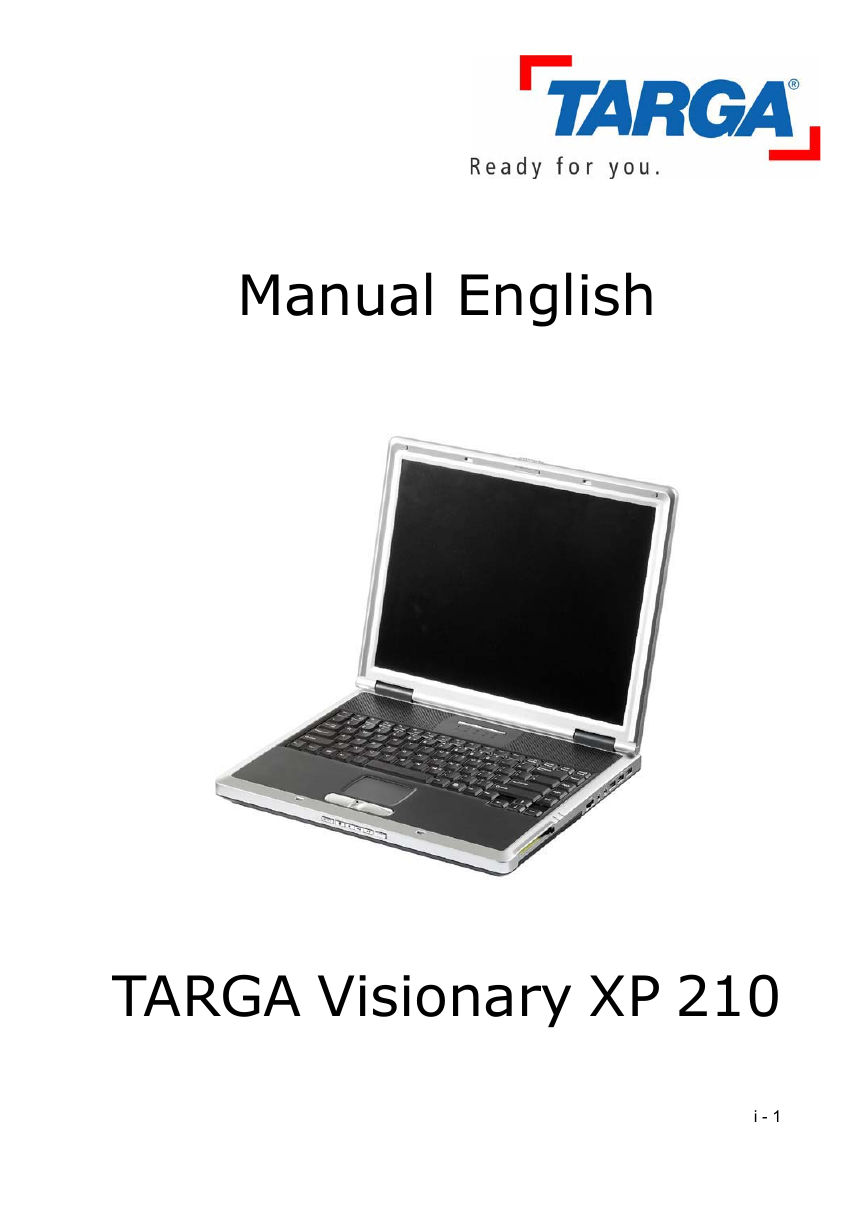
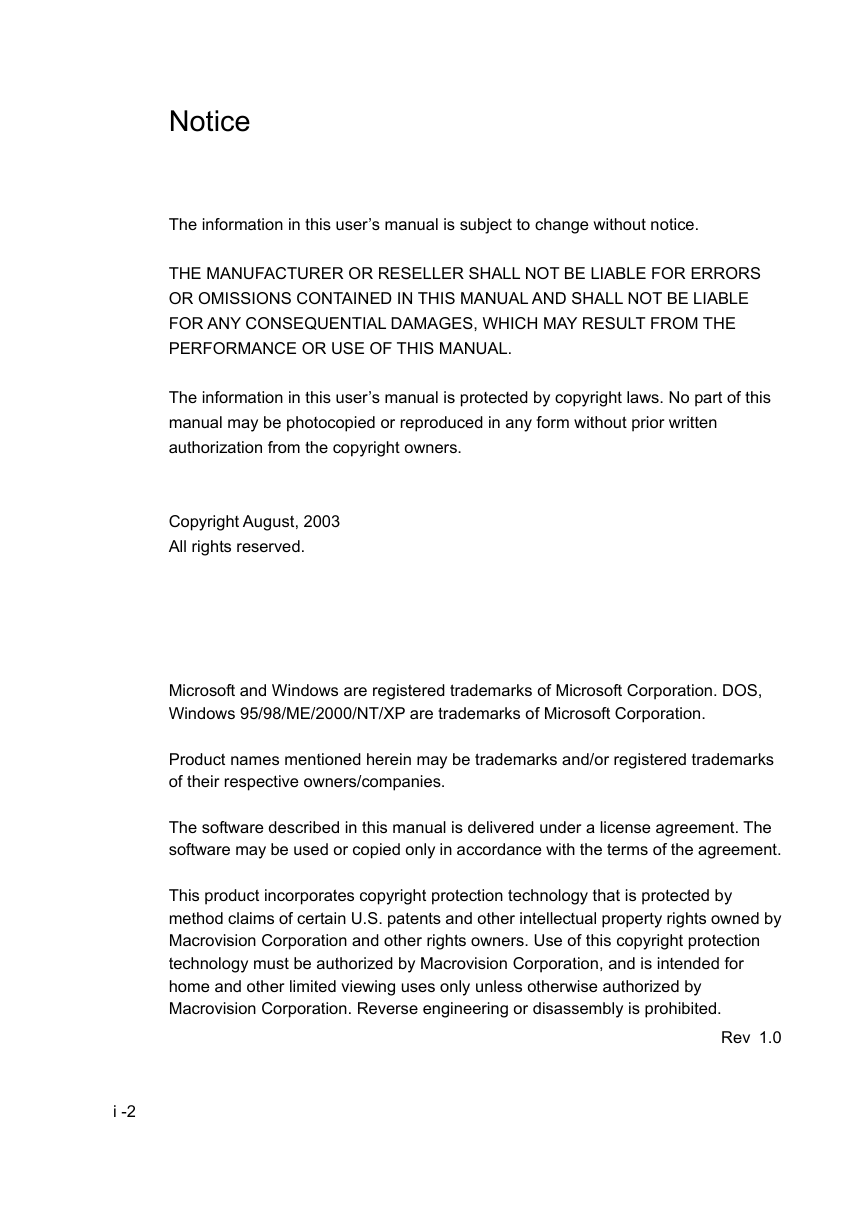
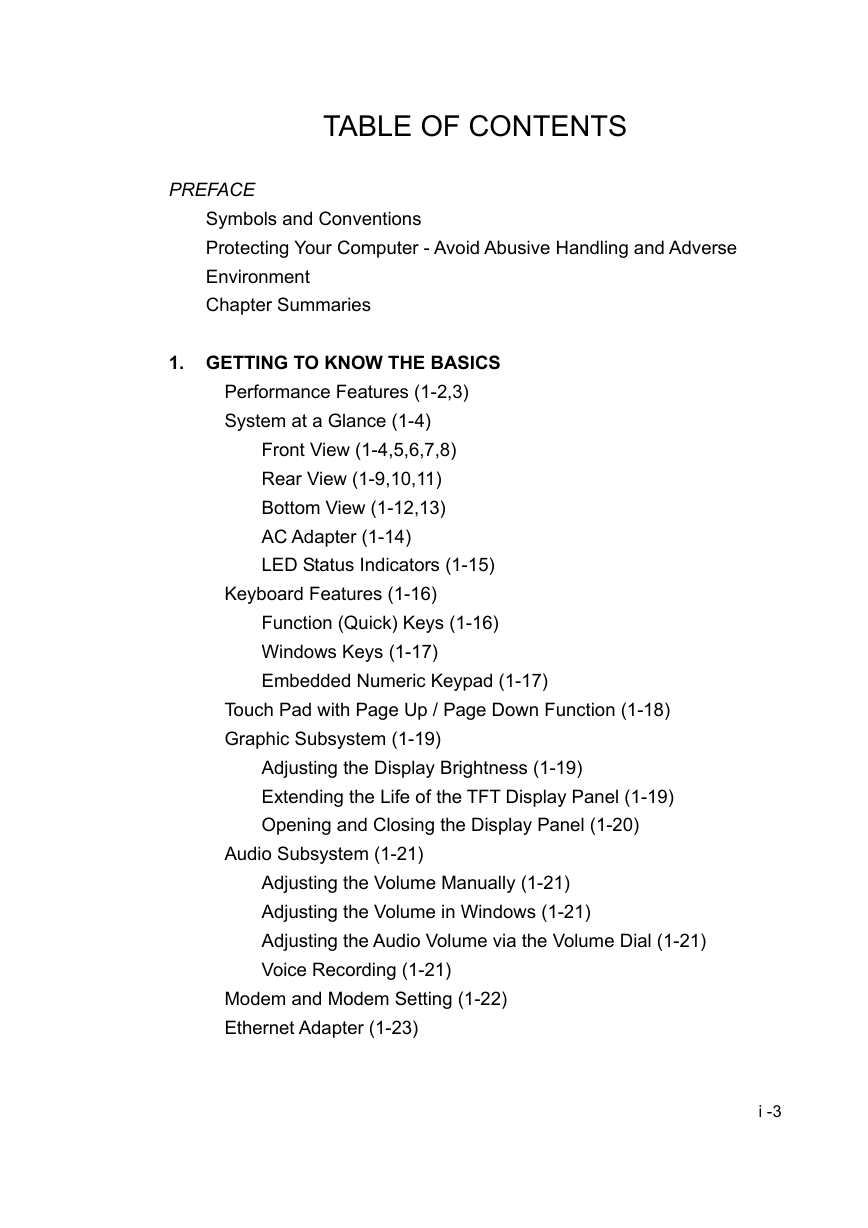
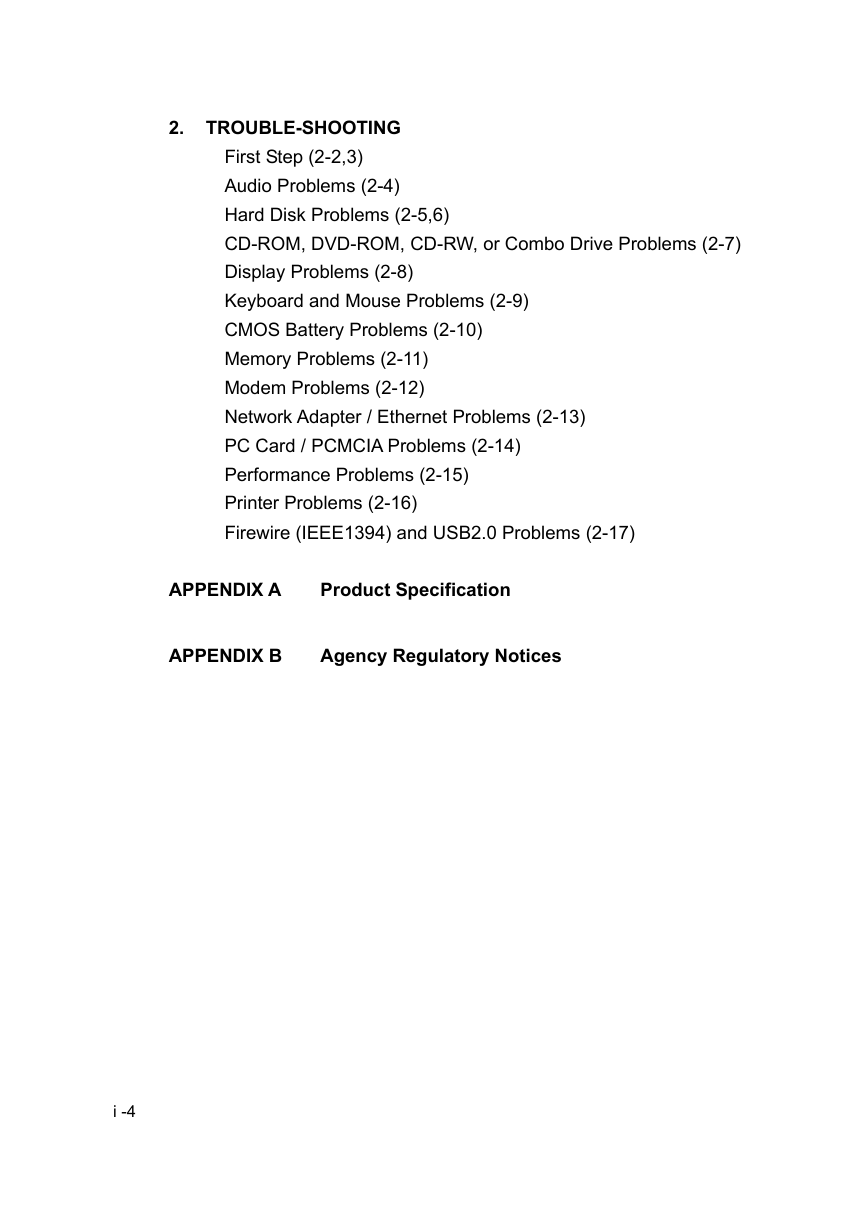
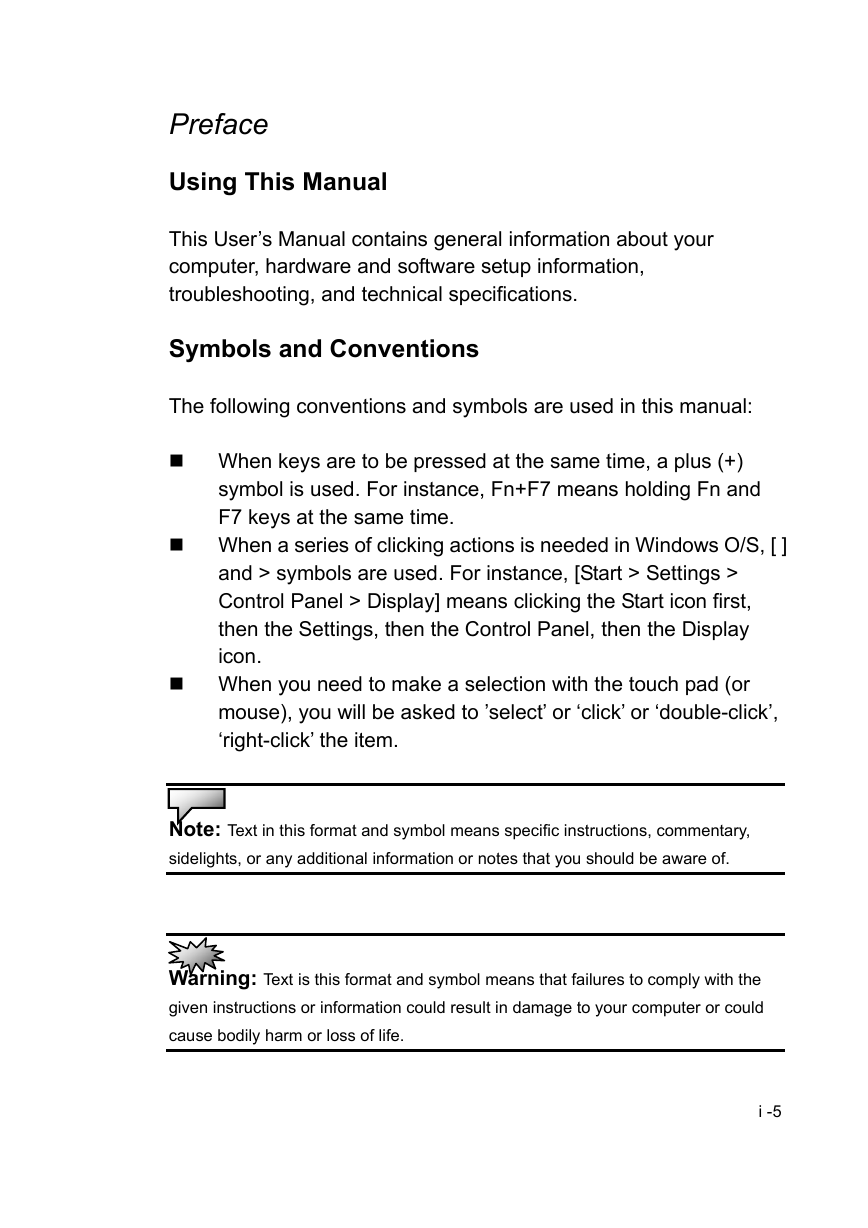

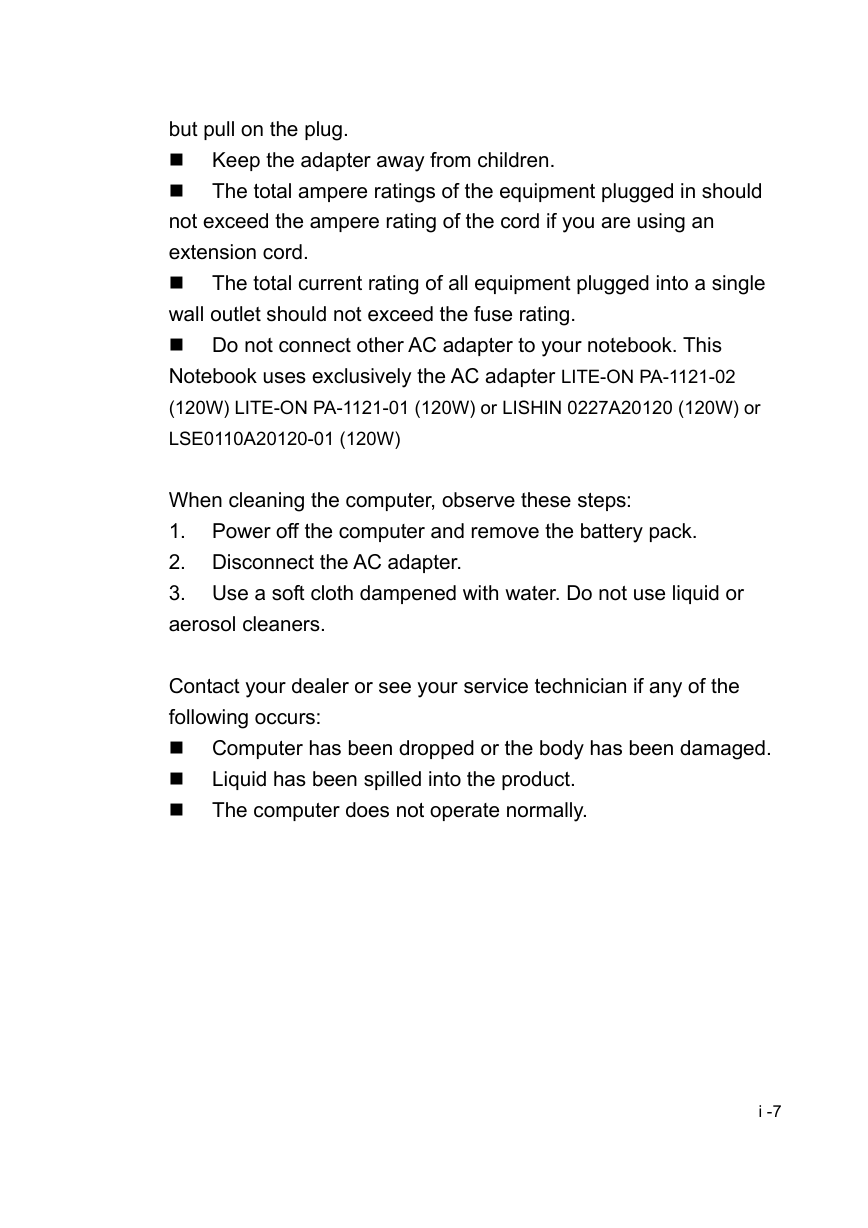
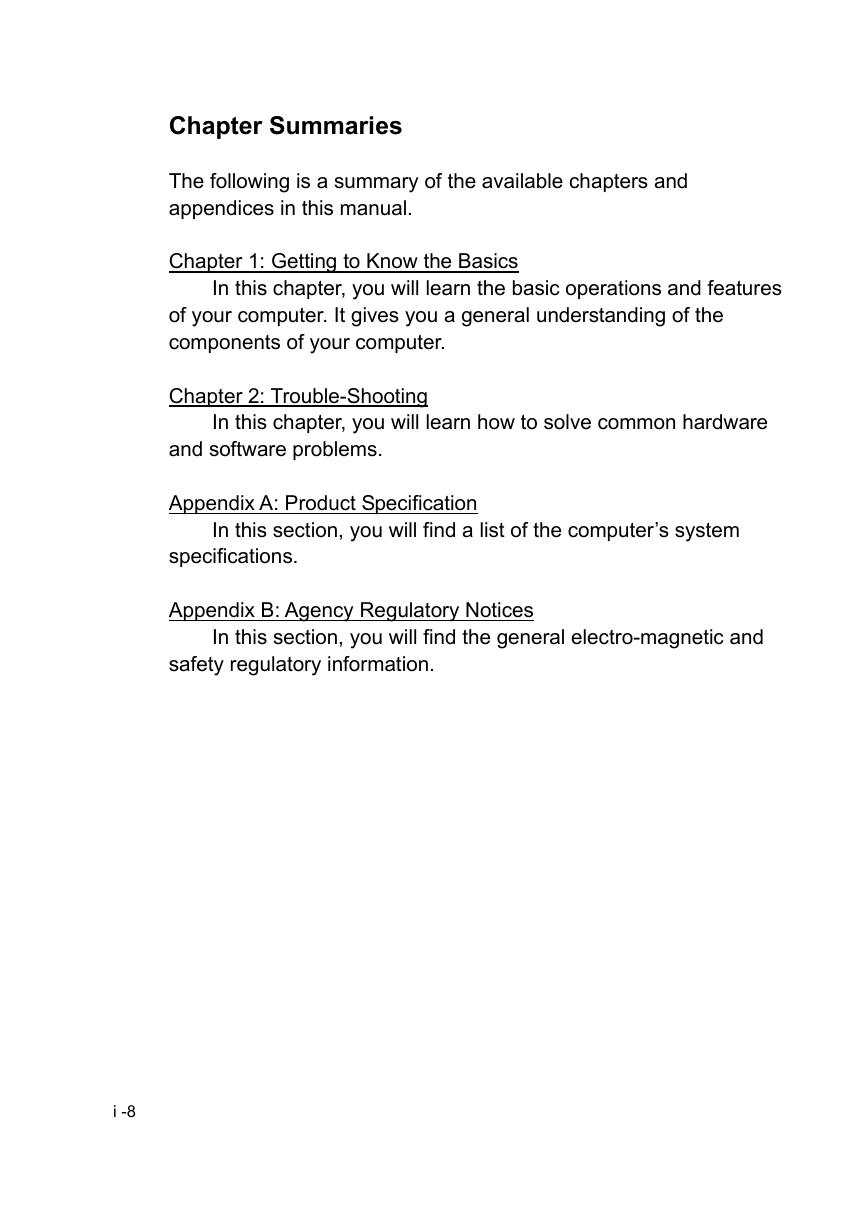








 2023年江西萍乡中考道德与法治真题及答案.doc
2023年江西萍乡中考道德与法治真题及答案.doc 2012年重庆南川中考生物真题及答案.doc
2012年重庆南川中考生物真题及答案.doc 2013年江西师范大学地理学综合及文艺理论基础考研真题.doc
2013年江西师范大学地理学综合及文艺理论基础考研真题.doc 2020年四川甘孜小升初语文真题及答案I卷.doc
2020年四川甘孜小升初语文真题及答案I卷.doc 2020年注册岩土工程师专业基础考试真题及答案.doc
2020年注册岩土工程师专业基础考试真题及答案.doc 2023-2024学年福建省厦门市九年级上学期数学月考试题及答案.doc
2023-2024学年福建省厦门市九年级上学期数学月考试题及答案.doc 2021-2022学年辽宁省沈阳市大东区九年级上学期语文期末试题及答案.doc
2021-2022学年辽宁省沈阳市大东区九年级上学期语文期末试题及答案.doc 2022-2023学年北京东城区初三第一学期物理期末试卷及答案.doc
2022-2023学年北京东城区初三第一学期物理期末试卷及答案.doc 2018上半年江西教师资格初中地理学科知识与教学能力真题及答案.doc
2018上半年江西教师资格初中地理学科知识与教学能力真题及答案.doc 2012年河北国家公务员申论考试真题及答案-省级.doc
2012年河北国家公务员申论考试真题及答案-省级.doc 2020-2021学年江苏省扬州市江都区邵樊片九年级上学期数学第一次质量检测试题及答案.doc
2020-2021学年江苏省扬州市江都区邵樊片九年级上学期数学第一次质量检测试题及答案.doc 2022下半年黑龙江教师资格证中学综合素质真题及答案.doc
2022下半年黑龙江教师资格证中学综合素质真题及答案.doc